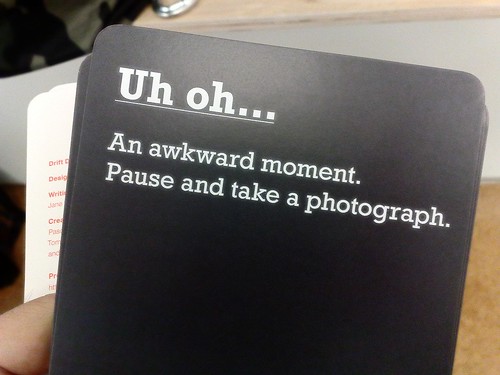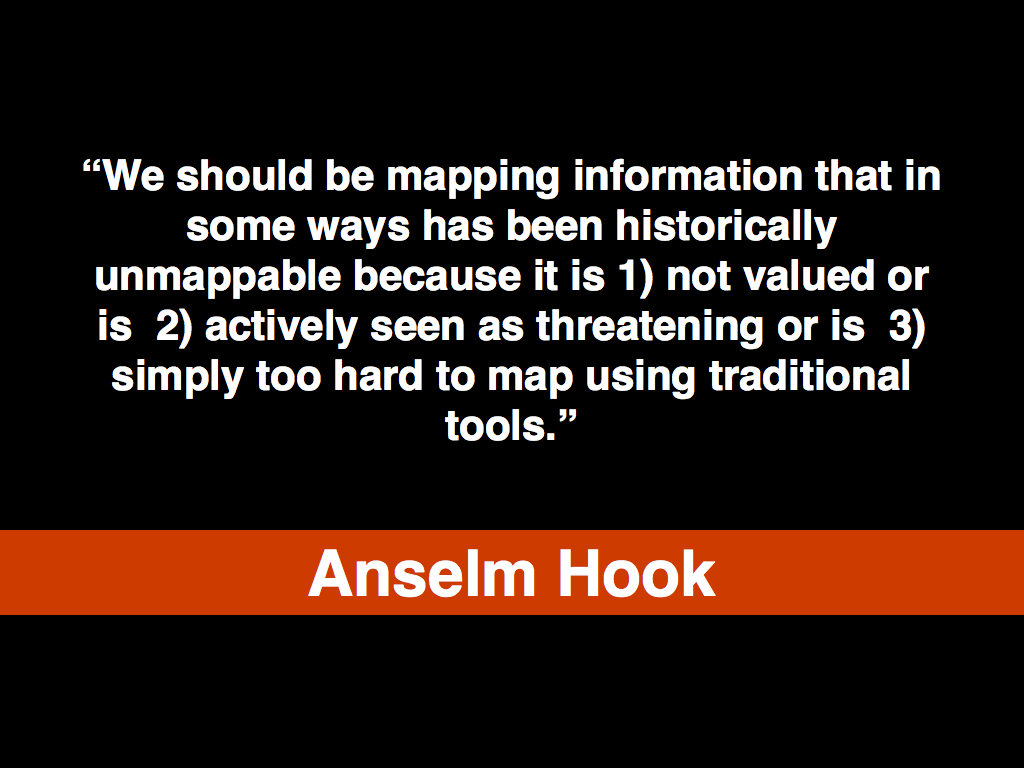The pattern of things within the confusion of details
I spoke at Design
Engaged, last week. I gave a bit of a hand-wavey talk called Capacity Planning for Meaning (in the age of personal informatics)
. Hand-wavey because
it was basically a series of hunches hung together with some
funny slides but also because it seems to be what I do when I speak. There are too many
pictures of me caught with my hands out, fingers extended,
trying to direct invisible meme-lasers at the audience to
deny the obvious. At the end of it all, I felt a little like I did after
the first
Papernet talk in 2007: Pleased that I had bothered to
try to make the argument, wishing I had a chance to do it
again to work out the kinks and very much unsure
whether I'd made any sense or anyone even cared.
These are not my presenter notes. As I mention below in 2008 I had yet to start writing out talks in long-form. Once in a while I would try to recap the arguments in a blog post. This is one of those times. This is what I wrote, at the time, casually mixed in with my slides which used to be included as an <embed> to Slideshare. If the words and pictures seem a little out of sync that's why.

I take some solace in the fact that the Papernet is still chugging along and I can argue its case in a more or less coherent fashion now whether its in elevator or rambling, drunken tirade mode. I don't usually write notes for my talks instead using each slide as the cue for an argument over drinks so the early days sometimes sound like crazy-talk. But since everyone told me that Design Engaged was an opportunity for more crazy-talk than not I figured I would try to jump in with both feet.

The talk starts by taking both the enthusiasts and the
pessimists at their word that the world has a serious sensor-porn
habit (that's fancy-talk for ubiquitous computing
)
it's not going to give up any time soon. It also assumes
that it might not be all bad. Specifically, that whatever
other challenges a change like this presents there's
something in it all worth making sure we don't fuck it
up.
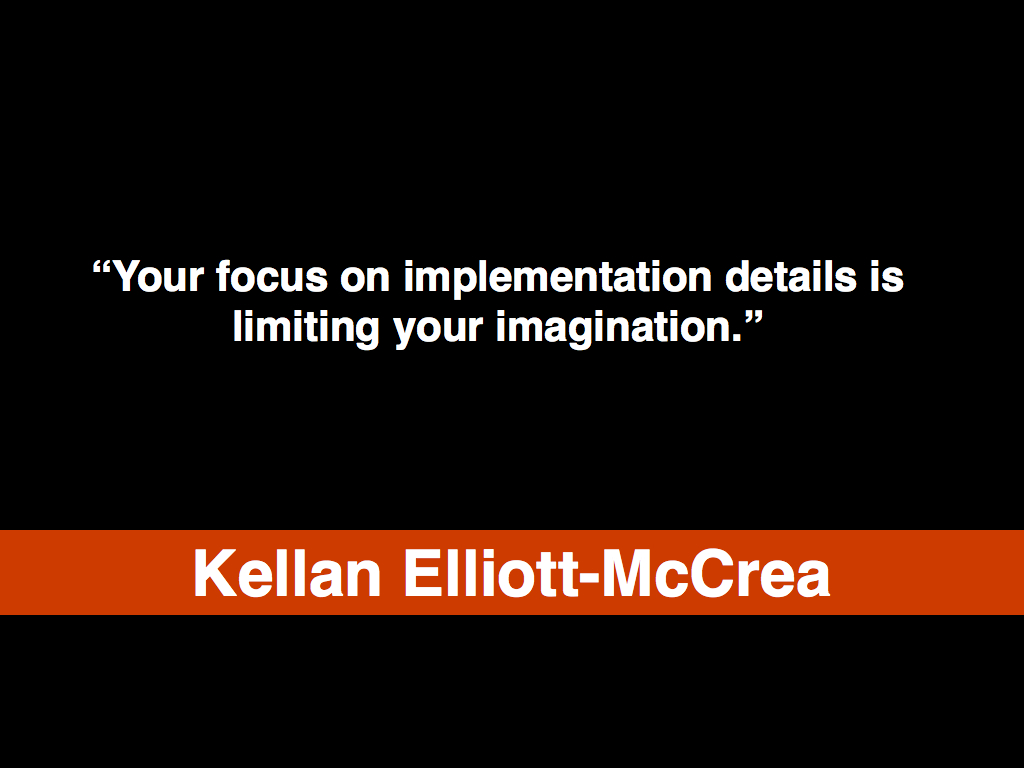
As a rule, talk about ubiquitous computing breaking has centered around social abuse: What happens when a badly designed system negatively impacts you. This is usually equal parts a call to ensure that users can always save face and that services aren't creepy. All good. So I didn't bother talking about those. Instead I asked people to imagine two other possible breaking points.

The
first simply being that everything breaks and that those things which fail often
enough and with no grace are usually fast ignored and forgotten. If the lowly smoke detector was
one of the earliest pieces of ubiquitous computing what does
it mean that most of us, at some in our lives, simply rip
the battery out of its casing and then can't bring ourselves
to reactivate it despite all the evidence to the contrary? If
the pocket call
is the smoke detector of
personal informatics what does it mean that you are
powerless to even rip the battery out, so to speak, when
your phone gets stuck at the bottom of their bag and
sends 144 blank text messages in 28 minutes? It would be
like the smoke detector storing up fifteen minutes of smokey
siren music to replay six hours after the oatmeal
stopped burning.

As it turns out, you're kind of fucked if it ever happens.
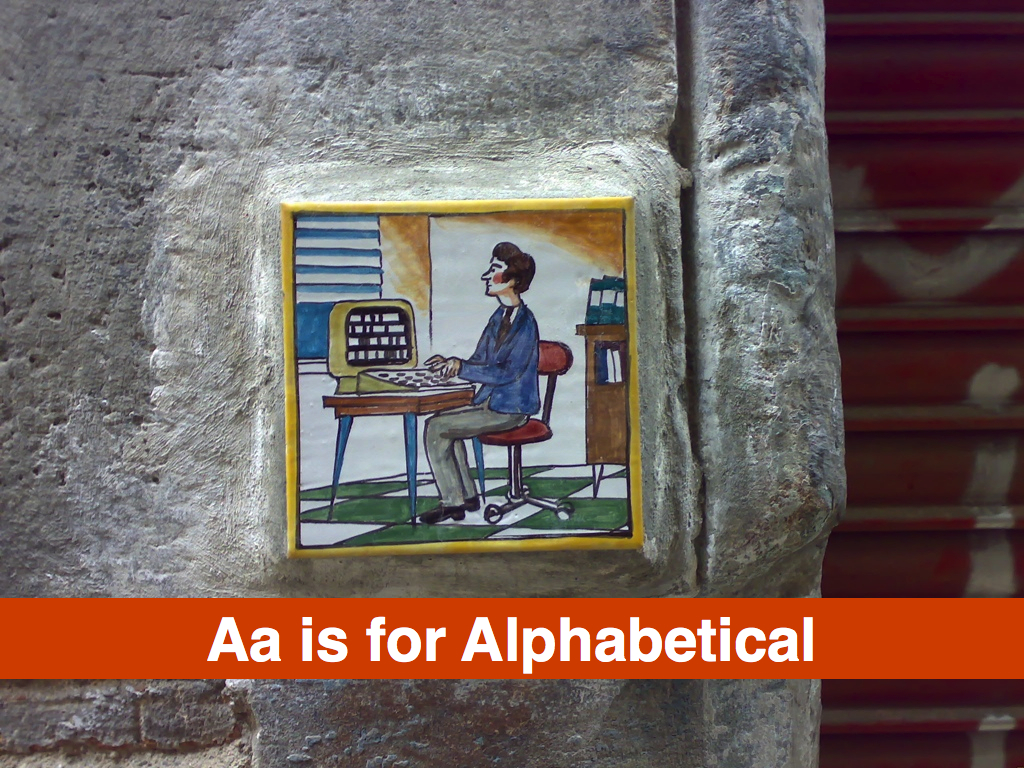
This is not Clay Shirky's filter failure: It is not people failing to adapt to the future. It is not even bad design. Everything breaks, so what happens when we wire the world on the sort of massive scale being proposed and every day is more irritating than the next? Probably what will happen is that people will just walk away from the entire project damning it first with market insignificance and if that doesn't work then rendering it meaningless with government regulation. So it's something at least worth talking about.

The second question was how this stuff breaks us and was inspired by Rusty Schweickart's talk about near earth objects (you know, asteroids) at a NASA/Brickhouse lecture last summer. The really short version is that we don't see most of the billions und billions of asteroids hurtling towards us today and that our situation is akin to standing in a field with your eyes closed while a pitching machine launches baseballs at you. The chances that you'll actually get hit by one are basically nil until you open your eyes, get tweaked by the situation and start ducking. Essentially by reacting you magnify the chances of being struck by a baseball.

That got me wondering: What are the equivalent near
earth objects
for all this data we're collecting and
turning into our own personal 24-hour news channels? If we
are hard-wired to rubberneck traffic accidents, beautiful
people and data (especially when it's about
ourselves) where are the stress points that will cause us to
binge and purge?

Adaptability
is usually the
counter-argument: Those who come after us will adapt and take
it for granted. Like the sewer system, for example, no one
will get excited about, or even reflect on, the Internet and
ubiquitous computing in time. I think that's a bit of a red
herring really. The point is not that we won't adapt to the
volume (I don't actually think we do but instead just become
more and more forgiving of each other's distraction but
that's another story) but that in the volume we're proposing
to bring on line there is probably something we've never seen before
that will do more harm than not despite ourselves.
We should be asking ourselves what those things are, or might be.

So, no answers. Only conceptual, hand-wavey questions about a not impossible future.
The other semi-constant in all of these discussions is that it is the teenagers (and occasionally financial analysts) unburdened by the baggage of the past (or maybe just hopped up on sugar) who will guide us through this new and strange territory. Aside from the long list of concerns I have with either possibility, it seems to me that there is a also another group of people who drink from the firehose of the constant now and from whose professional disposition we could maybe learn something.

John Allspaw has written that: Capacity planning is a term that to me means paying
attention. Web applications can fail in all sorts of
dramatic ways, and you're not going to foresee all of
them. What you can do, however, is make use of what you
do know about what happens in your real world on a
regular basis. ... You're not
going to predict every failure mode of the whole system,
but knowing the failure modes of individual pieces
should be considered mandatory. Armed with that, you can
make decent forecasts about the future.
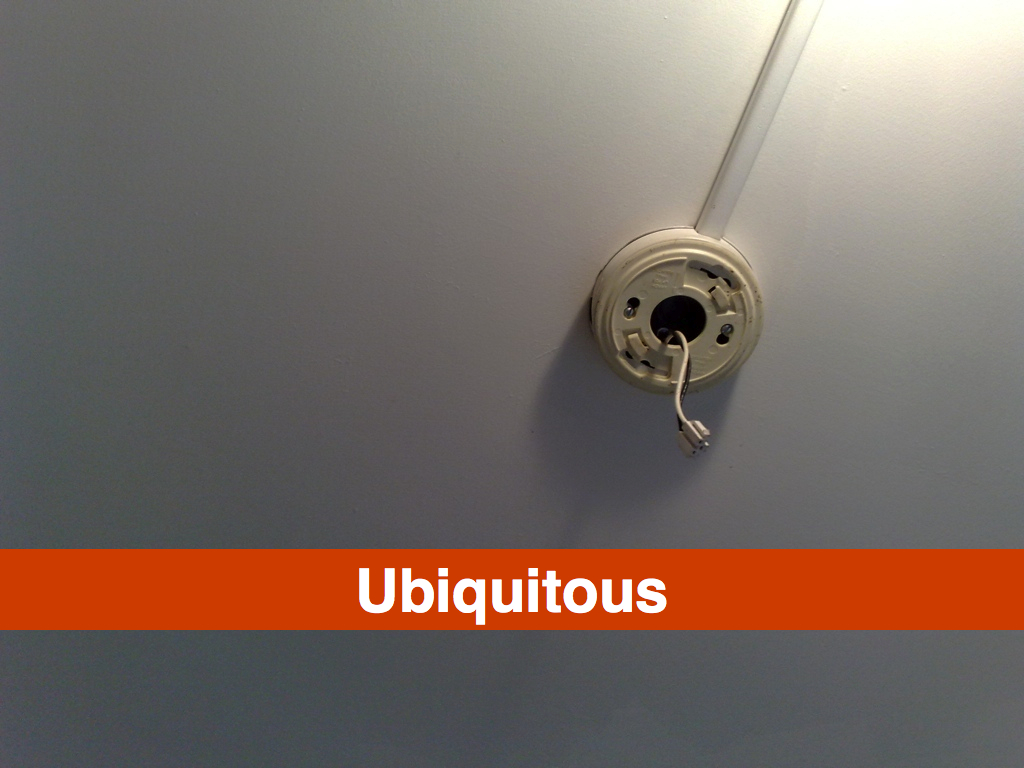
And Leonard Lin has written that In a perfect world, you'd have perfect capacity
planning and infinite resources, but if you've ever
experienced real-world hockey-stick growth on a startup
shoestring, you know that's not the case. If you have,
you understand that scaling is the brick that hits you
when you've gone far beyond your capacity limits and
when your machines hit double or triple digit
loads. Architecture doesn't help you one bit there. And the people that have experienced this and lived
to tell the tale also know that it's impossible to
critique the technical/operational aspects made w/o
seeing and understanding the QPS targets, load graphs,
profiling data/sar info and all manner of other
architectural/technical data and details (that none of
us are privy to) before commenting with any sort of
authority.

Operations people. You know, the people who keep your websites running and the people who are increasingly being asked to keep your websites running under increasingly noisy circumstances.

Operations people spend a huge amount of their day ensuring that they are not woken up at two in the morning and asked to put out fires. To that end the rule of thumb is record and graph everything and understand what the high and low water marks are to help recognize a situation that needs attention versus one that doesn't.
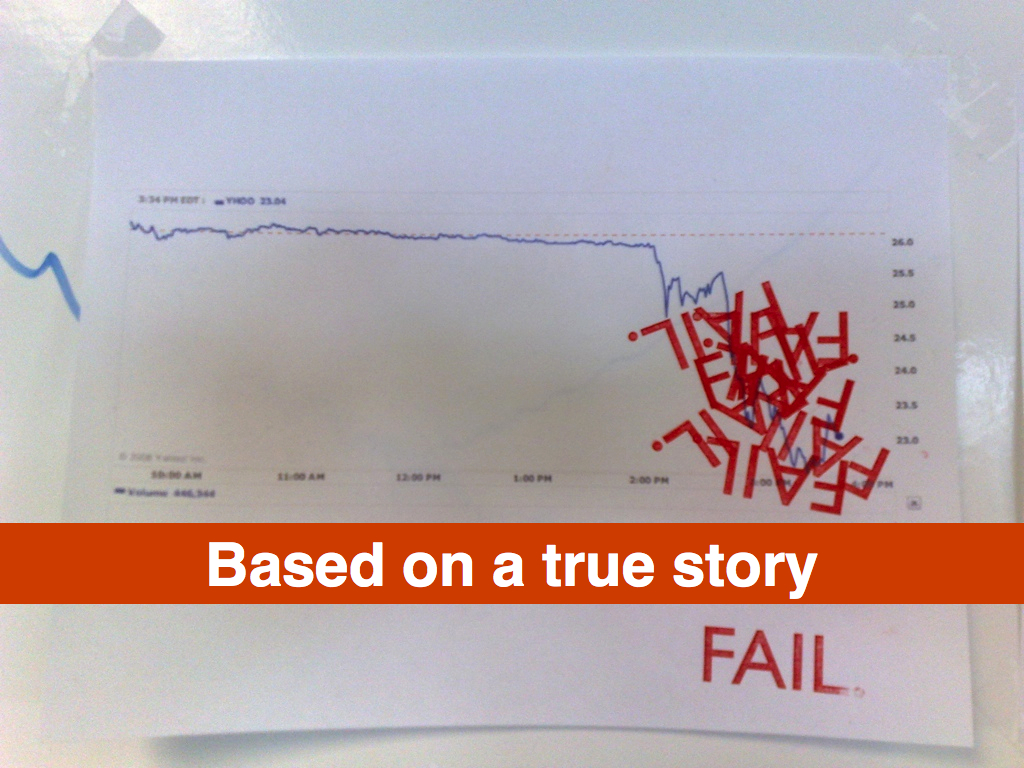
They deal with a volume of information and changing circumstances that mirrors, or at least foreshadows, the magic happy ambient-aware spime-world we assume is already underway and have developed tools and coping mechanisms to monitor, visualize and ultimately try to make sense of things. It seems to me they probably have something useful to add to the conversation.
True story: YHOO's share price, one morning.

At the same time, they could use some help. One of the great skills of operations people is the ability to pick up almost any piece of software, no matter how poorly written or documented, and learn how to use it. That's not necessarily a burden we should ask of everyone else, though. There is not usually the luxury of capital-D design outside the purely functional with most of these tools and their usefulness, or at least their lessons learned, will be lost on most people without it.

Operations people. Really.

At this point without saying so explicitly I crashed my talk head-first in to the design vs. art, art vs. craft, craft vs. design debate.
Which was sort of crazy since I'd already run off at the
mouth long enough to get the two-minute warning and I wasn't
sure what I was trying to get at
except to say we've been here before
(which I had
said twice, already).

Stamen has pretty successfully laid claim to, and proven,
the idea that data visualization is a
medium. They've often talked about presenting the
data in its entirety (more or less) and letting people prune
it themselves and Mike Migurski (from Stamen) did a great
presentation about the future-past of tiles
and talked about some of the opportunities
that really-realtime event-based notifications
present.

When I wrote all of this John Allspaw would not do a talk titled Considerations for Alert Designs for another five years. If he had I almost certainly would have mentioned it here.

In contrast, I pointed out works by the painters Wayne Thiebaud and Richard Diebenkorn who each became landscape painters, in San Francisco and Santa Monica respectively, in their later careers. Both painted very different but highly stylized representations of the cities they lived in that are easy to appreciate for purely aesthetic reasons. At least that was my experience but living in California for three years has brought a whole new richness to their work that was hard to appreciate until I learned the funny way you tilt-shift your way through the day-to-day in either place.

I mention this because it's fun to see their
works not as the representation of a single moment but as the
all the extra sensory overload that comes with city life
which we normally filter out and ignore massaged by hand to
eliminate air pockets, then dried and cured ... sliced thinly or grated.
Which is a lovely way to
think about dealing with all this invisible ambience that
surrounds us.
I totally stole that link from Timo's presentation, later that morning, by the way.

The contrast wasn't to criticize the work that Stamen and others are doing but rather to use them as a foil and stick my finger in the pie to ask the vague and rhetorical question: What can the lessons of absraction teach us about managing all this data we're going to collect about ourselves? Gardening, so to speak.

Inside
the high and low water marks of meaning the last thing I need is another
real-time dashboard or Where's
Godzilla?
window. This is
the place where there is still the freedom to play and the time to
nose around and find what Ben
Shahn called the pattern of things within the confusion of details
.
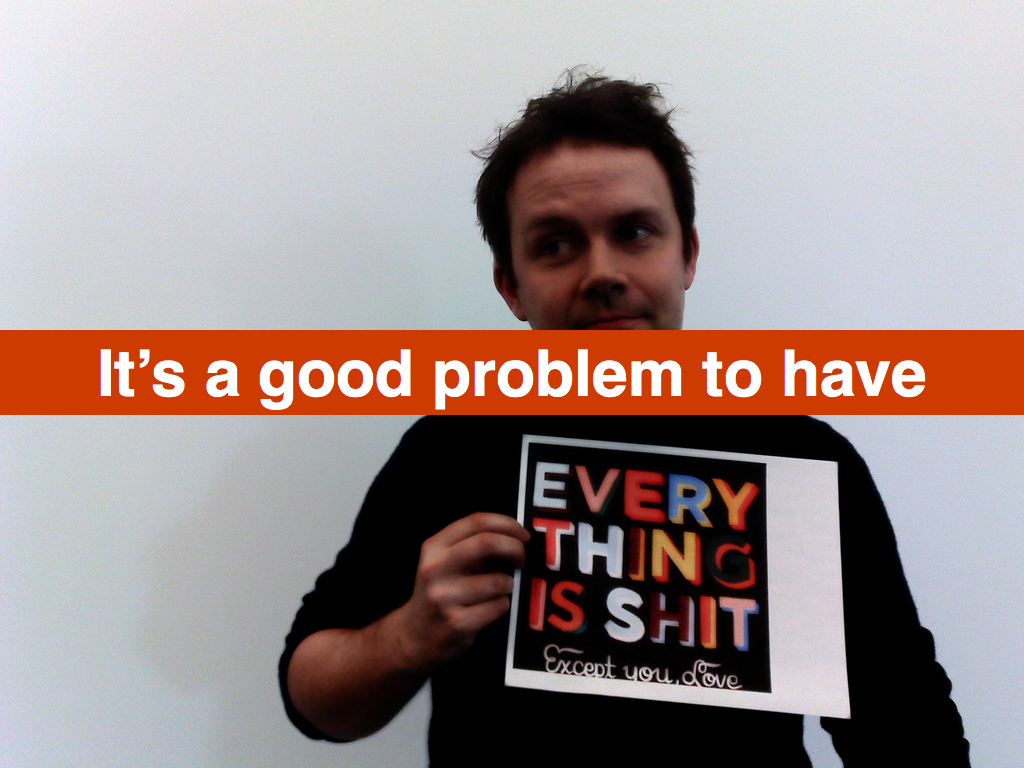
It's something to aspire to while we're busy being crushed by the implementation details.
This blog post is full of links.
#pattern